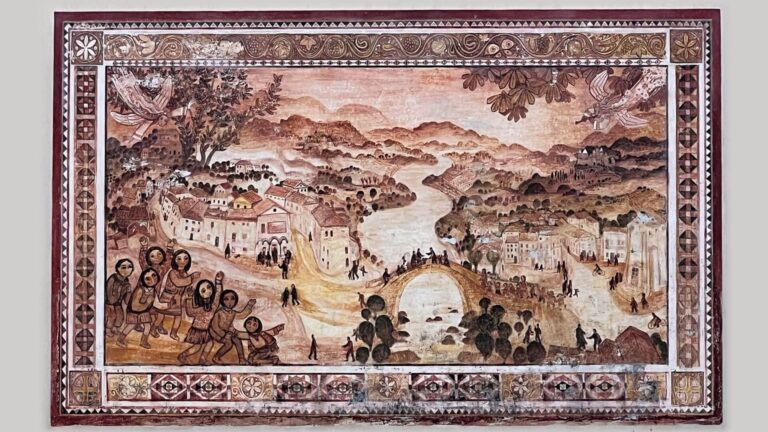ARTISTS’ ROADS
LE VIE DEGLI ARTISTI
watch the videos at the bottom of the page!
SARMEDE
Stepan Zavrel, A Bohemian Painter, of Sarmede, of the World
Sometimes, our lives take unexpected turns through chance encounters…
Rarely does this happen to entire villages.
But it happened in Sarmede.
It’s a true story, fuelled by imagination. It begins far away and crosses through twentieth-century Europe.
We’re at the foot of Mount Pizzoc, which watches over the Cansiglio Plateau.
Three thousand inhabitants. A square, a parish church, a war memorial, a town hall, some cafés, a few little shops…
A village like many others.
But as soon as you enter the municipal territory,
a painting tells you you’ve arrived in the “Land of Fairy Tales”, where the animals of the forest have gathered around a book, releasing butterflies of the imagination.
It all begins in Prague in the 1950s.
There’s a young man in his twenties from a modest Catholic family. His name is Stepan Zavrel. He is already an artist, but in that era’s Czechoslovakia, expressing oneself freely isn’t easy.
In July 1959, he organises a fake holiday in Albania. On the return journey, he makes an unscheduled stop in Belgrade and there, Stepan chooses to flee. He ends up in a refugee camp in Trieste.
Soon after, he’s at the Academy of Fine Arts in Rome, where he earns his diploma in painting.
In 1962, he studies set design in Munich. In 1965, he works in a London animation studio. Then, in Verona, he opens an art gallery.
In 1966, he publishes The Magic Fish, his first picture book for children. It tells the story of a lively little fish who lives inside a painting, but wants to discover the world.
It’s a new kind of book: the images don’t just accompany the text, they are an essential part of it.
For Zavrel, illustration is a form of art in its own right. It must take on unique forms and techniques, ones that can truly connect with young readers.
In Zurich, he founds Bohem Press, a publishing house specialising in illustrated books.
In 1968, he arrives in Rugolo, a hamlet of Sarmede. He buys a dilapidated house and gradually restores it, with help from the many friends who come to visit.
Seated in the dim light, among colourful cushions in that house, you felt welcomed. There was always a glass of wine waiting for you. Here, artists from East and West met. Poets of every language.
The year 1983 marks the first “International Exhibition of Illustration for Children”. By 1988, the International School of Illustration is up and running.
Stepan Zavrel died in 1999. He is buried in the cemetery of Rugolo, among the hills that truly welcomed him.
But his intellectual legacy still lingers in the streets of Sarmede, thanks to the Foundation that bears his name.
The annual theatre fairs, the hundreds of exhibitions, the creation of the museum that collects the original illustrations from his books, and the permanent show The Rediscovered Sun, a journey through late twentieth-century illustration in Sarmede, have made this little town famous throughout the world.
Zavrel, in Czech, means “closed”. But in Sarmede, Zavrel means “open to the world”.
And then, there are about eighty murals. Twenty of them are Zavrel’s own works, depicting, for example, Sarmede during a village celebration, or Venice reimagined as an underwater city, drawn from one of his stories.
The others are by Italian and international artists.
Beneath the arches of the Town Hall are ancient tales of the saints from this region.
Inside, the walls are transformed with elves, trees, and blue skies.
Elsewhere, you’ll find images of music, dancing, and houses turned upside down.
This is the living, generative response of a community that understood and embraced the visionary thinking of Stepan Zavrel, a true citizen of the world.
MORE EXPERIENCES!
Dipingere le città:
- Tarzo, i murales
- Conegliano, le facciate dipinte di via XX Settembre
- Vittorio Veneto, gli affreschi nella loggia di Serravalle
- Le farfalle di Montaner
MULTIMEDIAL MAP: “ARTISTS’ ROADS – LE VIE DEGLI ARTISTI- EN”!

